ANNA DUNNILL & CHELSEA FARQUHAR
Weaving Lessons
13 July 2024—11 Aug 2024
Opening:
Saturday 13th July, 5 - 7 PM
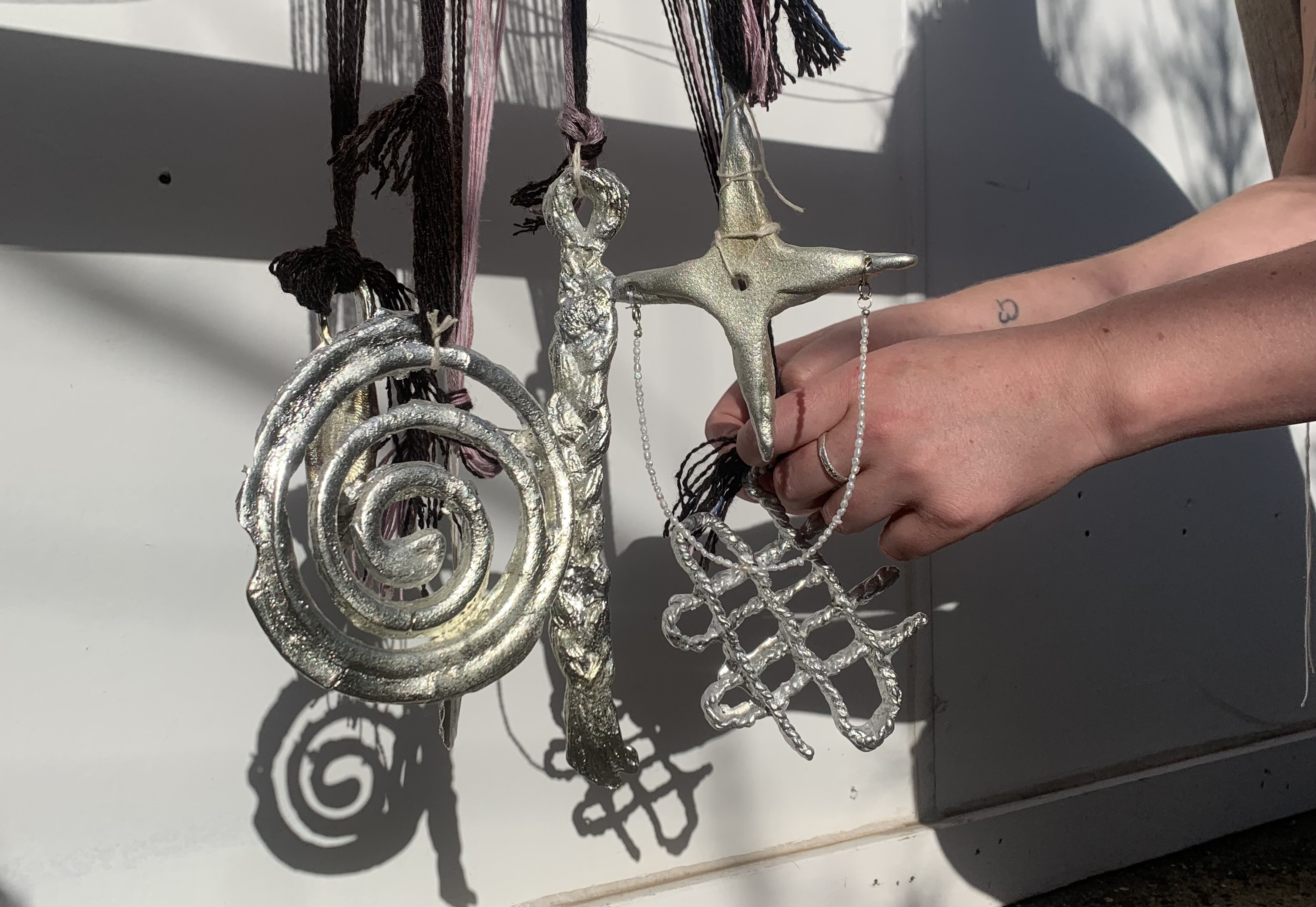
Anna Dunnill and Chelsea Farquhar
Weaving Lessons
2024
Wood, plaster, recycled pewter, linen yarns, cotton fabric, rice, coloured pencil
Anna Dunnill and Chelsea Farquhar have made a warp-weighted loom. This ancient technology is
a direct ancestor of the machines that still produce woven textiles for our daily lives.
Found across Europe and North Africa from at least 5000 BCE, the upright warp-weighted loom
was still being used in parts of Scandinavia and the Baltic well into the 20th century. As its name
suggests, the warp threads (vertical) are held in tension with a set of weights – traditionally simple
forms made from clay or stone. The weft threads (horizontal) are inserted from the top downwards,
using a wooden stick or shuttle to carry the thread. Another stick (the heddle-stick) is attached to
specific warp threads, enabling those threads to be pulled forward and weft inserted behind.
Weaving on this type of loom is shown in ancient Greek and Egyptian art as an inherently
collaborative process. Two weavers pass the weft-shuttle back and forth between them, working
together to make a cloth.
On our loom we have used a simple ‘tabby’ weave – over, under, over, under – to produce a plaid
textile. With intersecting coloured stripes of warp and weft threads, this pattern is one of the
simplest variations in this type of weaving process. Plaids and tartans are often associated with
Scottish or Celtic traditions, but similarly patterned cloth has been found in places as far afield as
Austria, North Africa and China – the latter dating back at least 4000 years. The history of textiles
spans the globe.
In the archeological record, loom weights are often all that survives of prehistoric textile practice. A
row of weights on the floor of an ancient dwelling can sketch the outline of an upright loom, a
ghostly half-finished cloth – both now disintegrated, along with their weavers. These rough objects
of clay or stone become crucial markers: a string of words in a sentence we can almost read.
Our installation features a series of elaborate sculptural weights cast from recycled pewter. We
bought cups and plates and goblets from the op-shop and melted them down in the back yard.
Their solid forms shivered into silvery liquid. We re-cast them into forms pulled from our individual
making practices and from textile history. These shapes are echoed in drawings on the loom’s
textured plaster skin, an embedded and personal language of textiles and craft.
In making this work, we have passed knowledge to one another like a weft-shuttle, back and forth,
the project growing each time. How to construct a loom. How to cast an object. How to pour
molten pewter. How to measure warp threads. How to mix plaster. How to weave a cloth.
This shared knowledge, these mutual weaving lessons, have turned a wooden structure into a
magical doorway – a conceptual time-machine. It jangles and gleams with potent symbols. It can
take us anywhere.

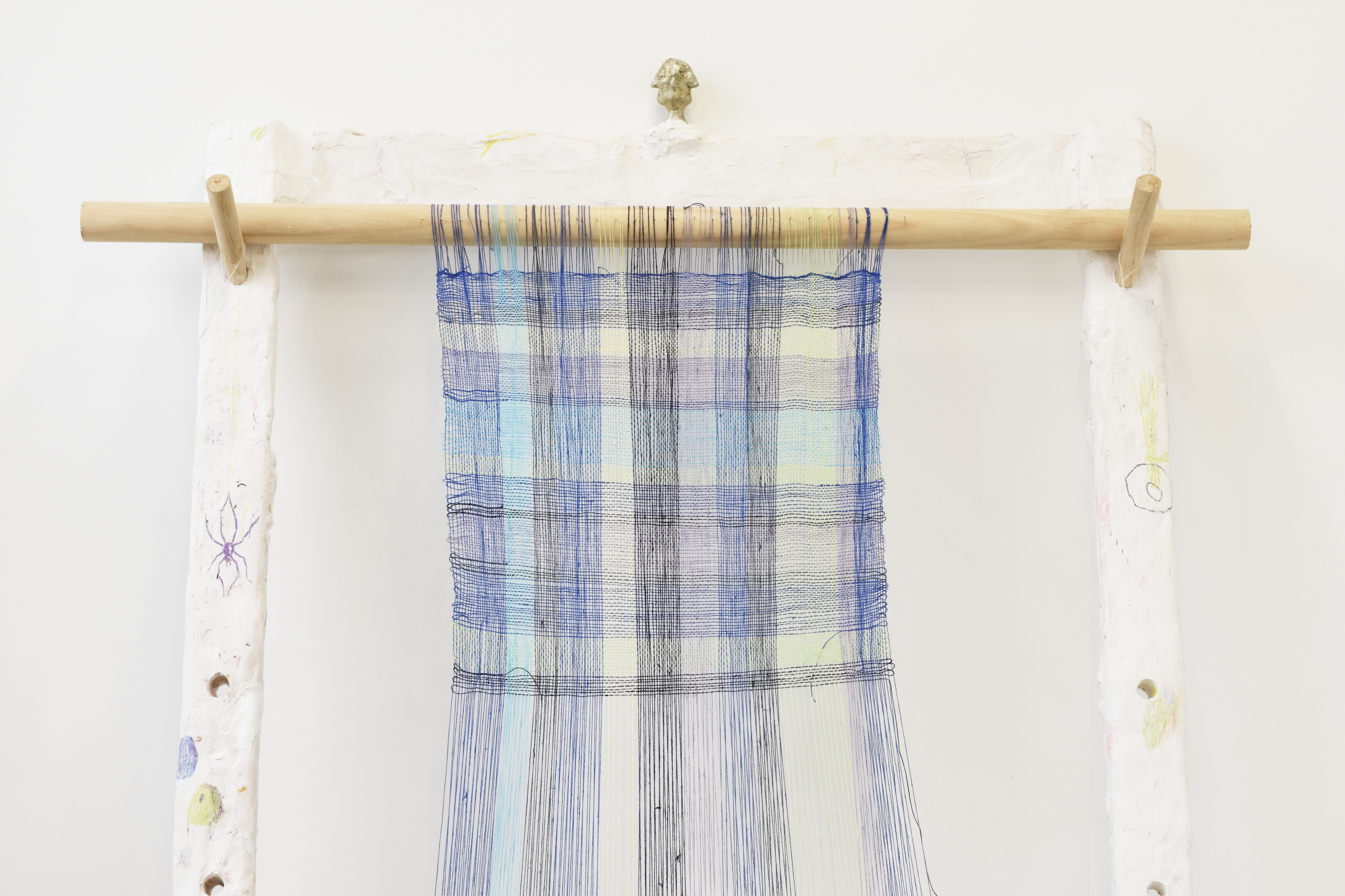
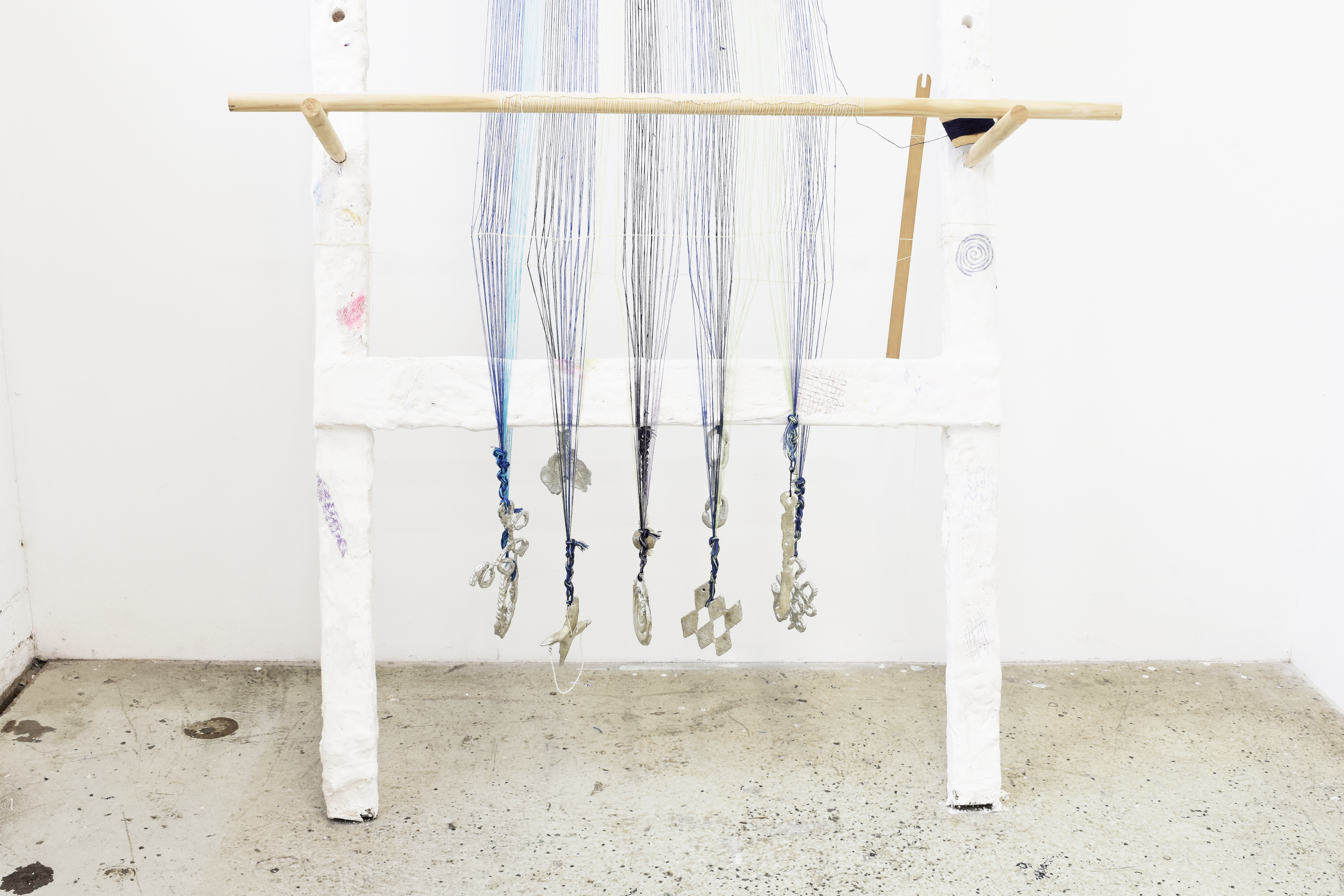

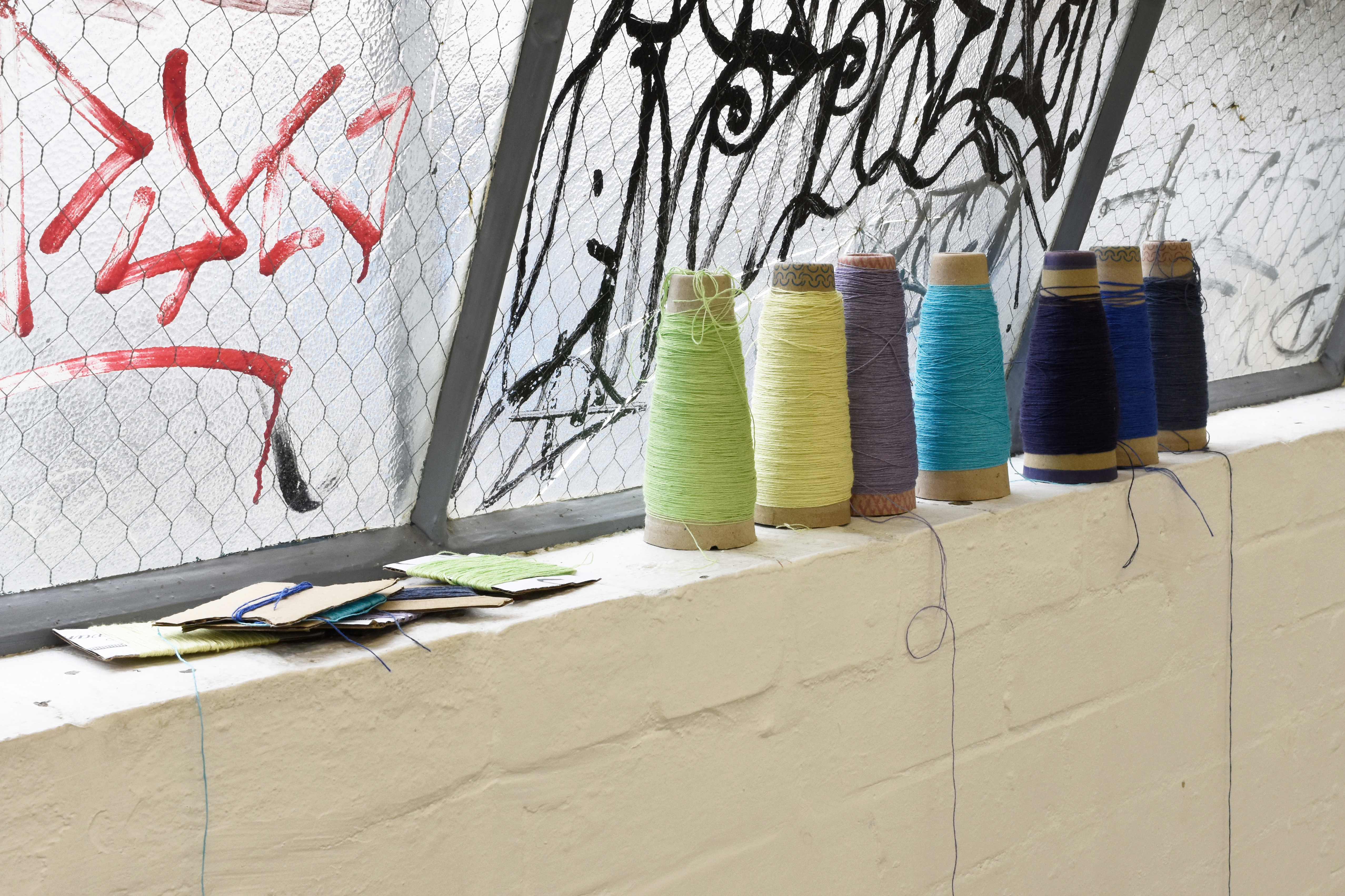
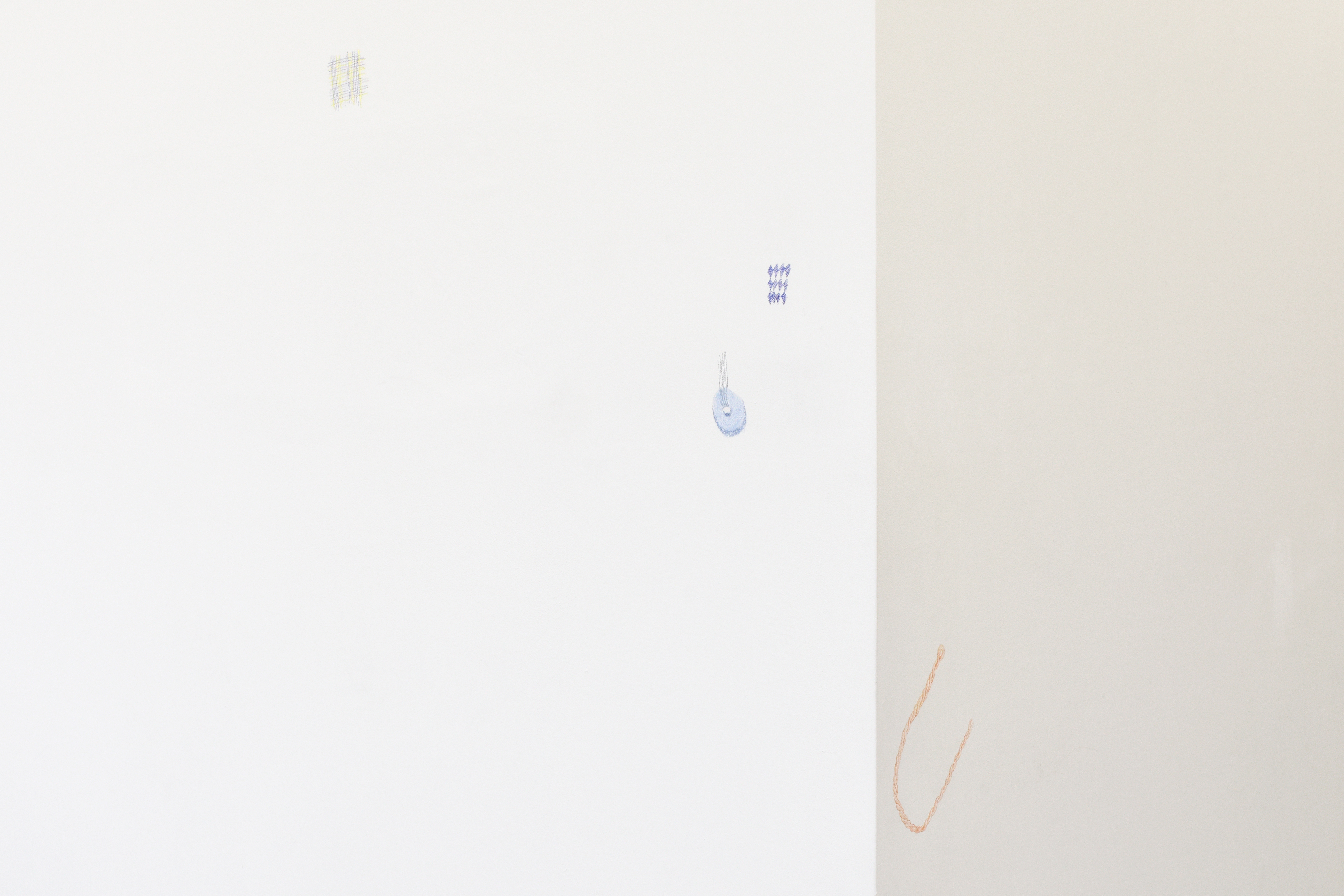
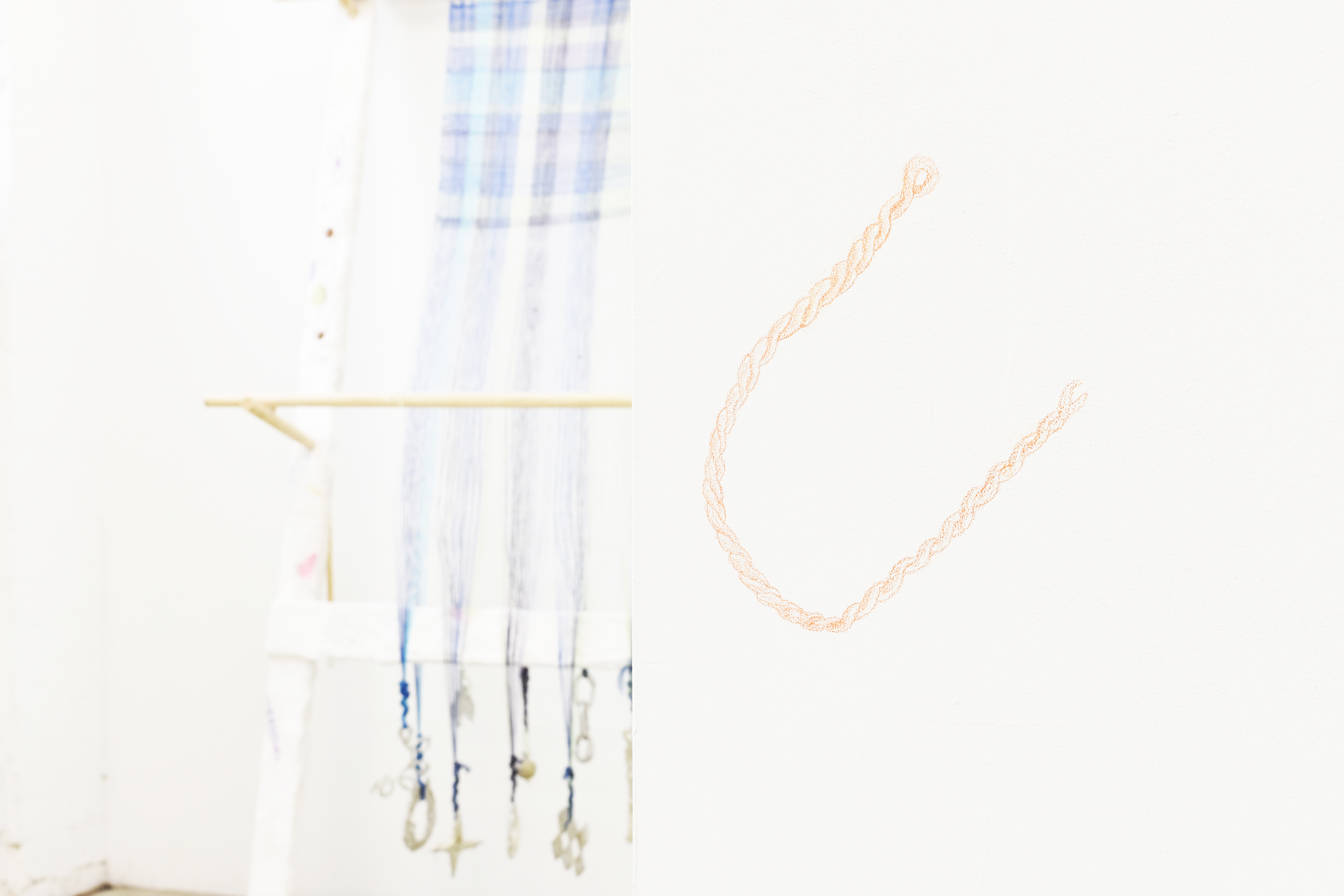
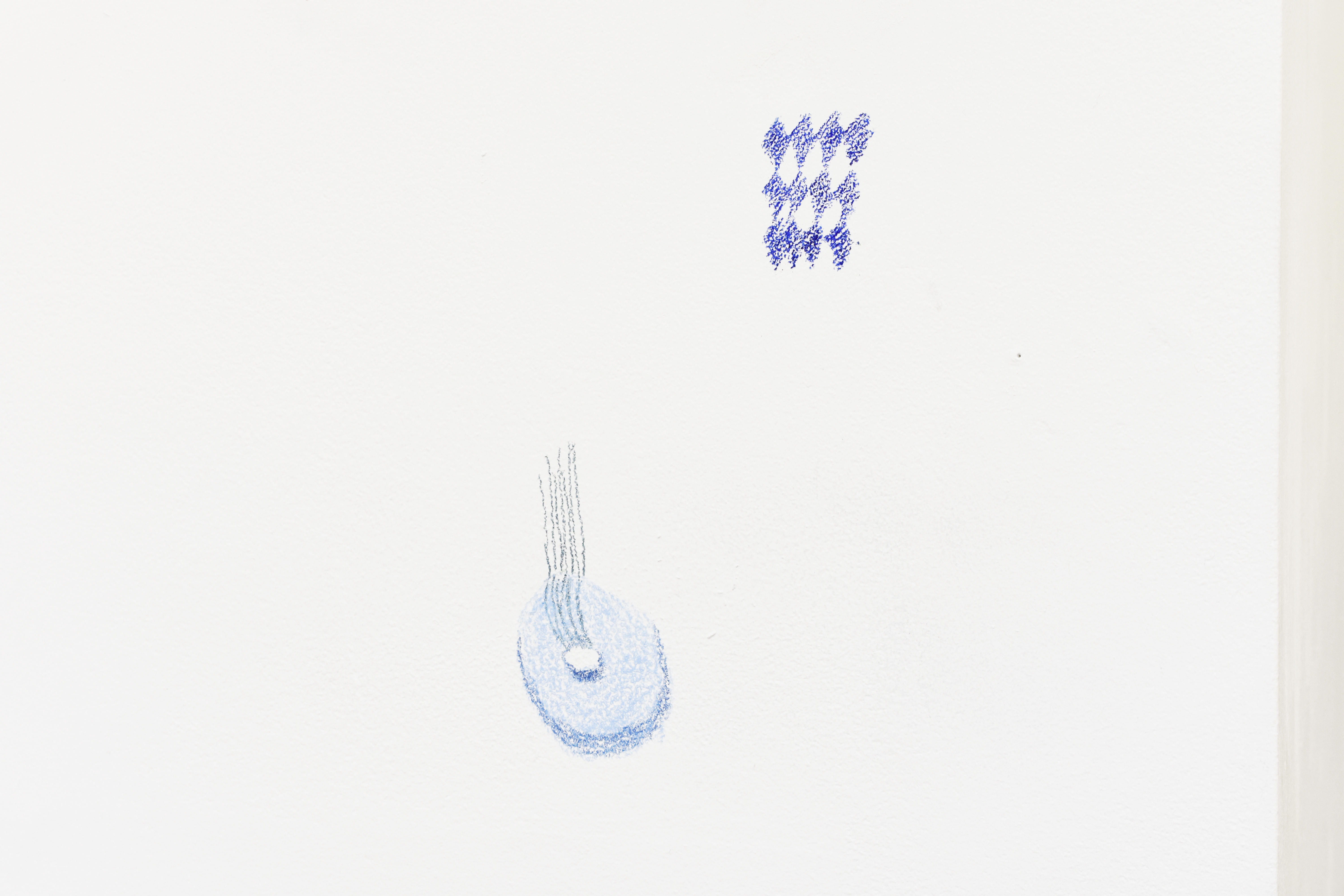
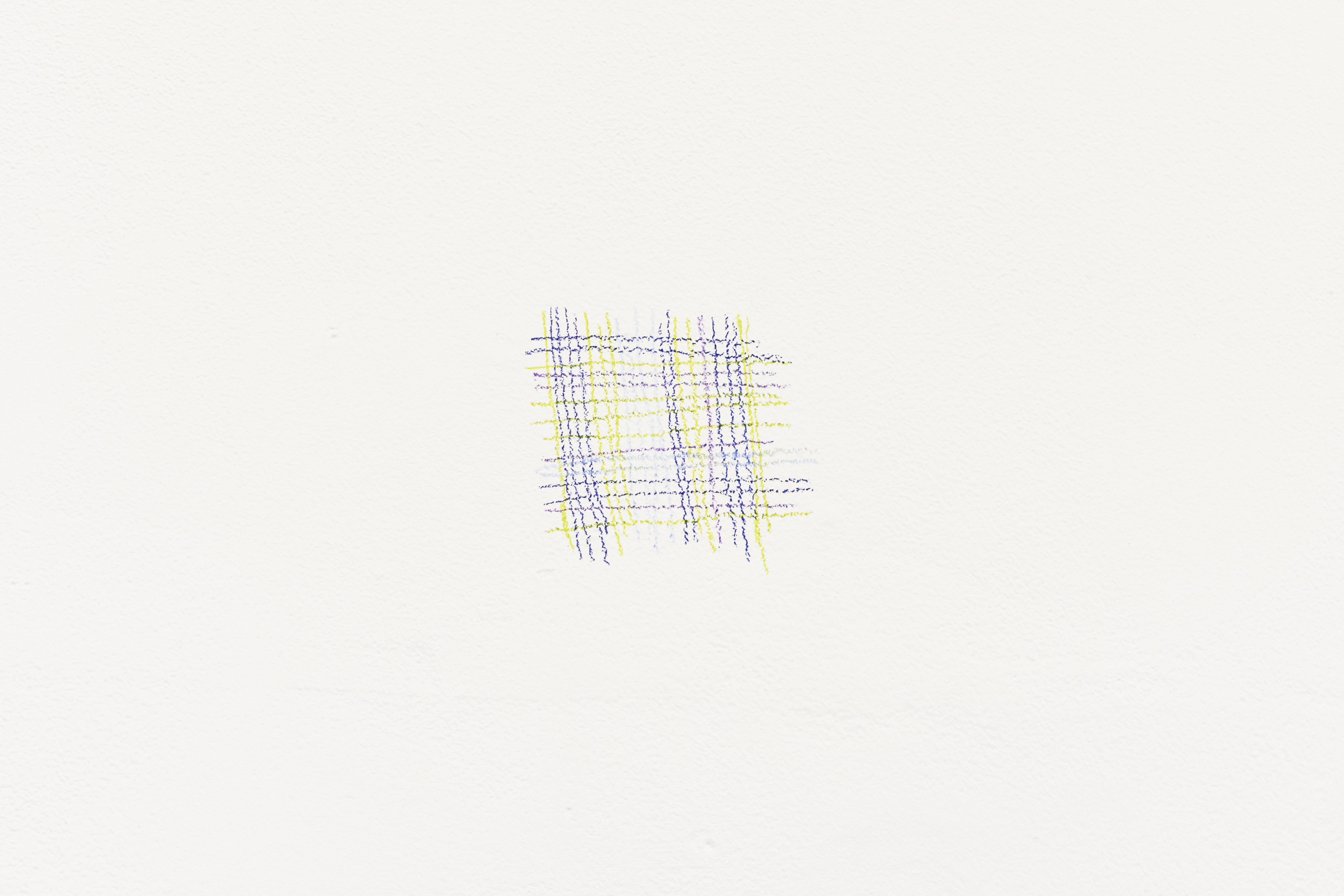




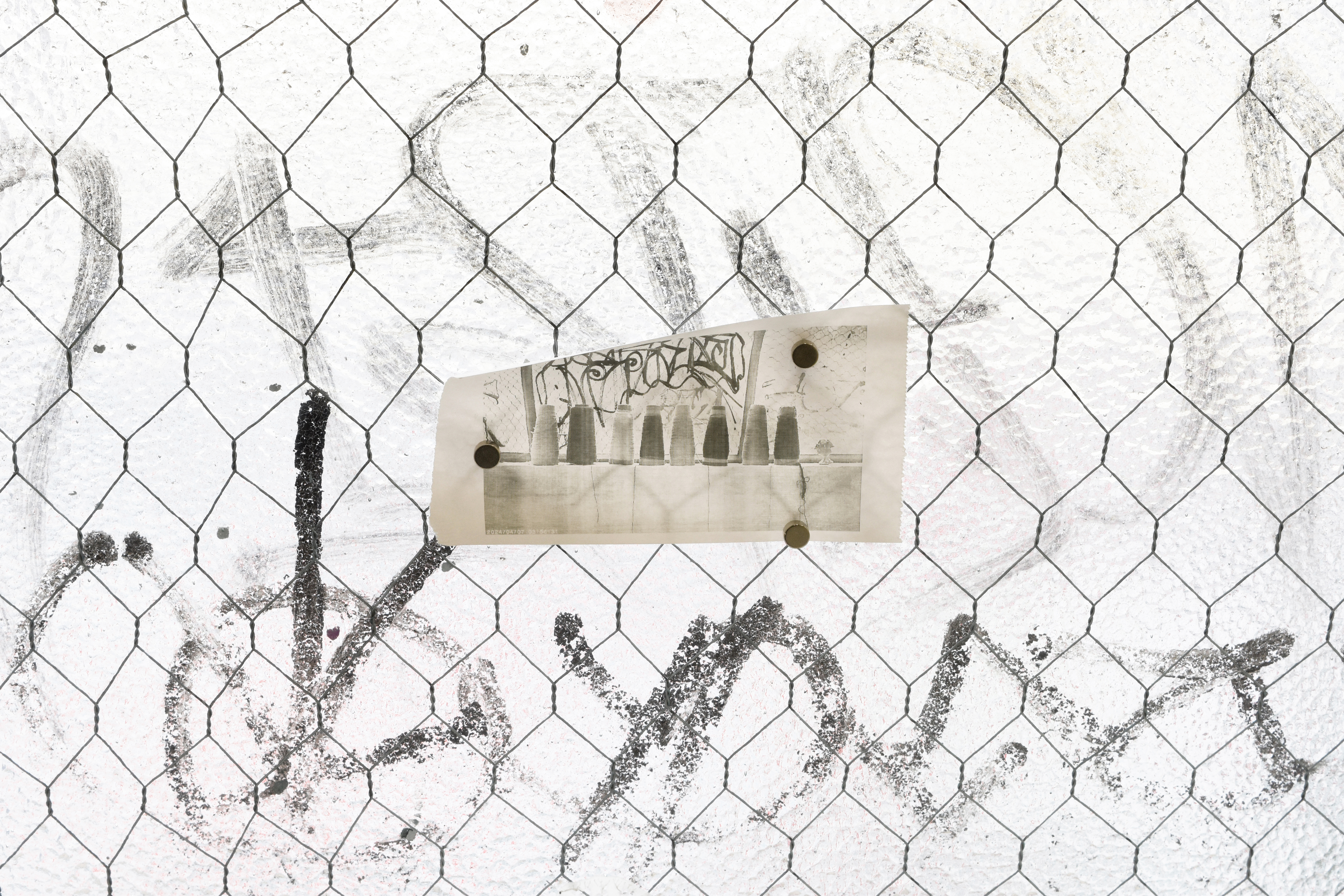
Image courtesy of Anna Dunill & Chelsea Farquhar.
Documentation by Nina Rose Prendergast.


